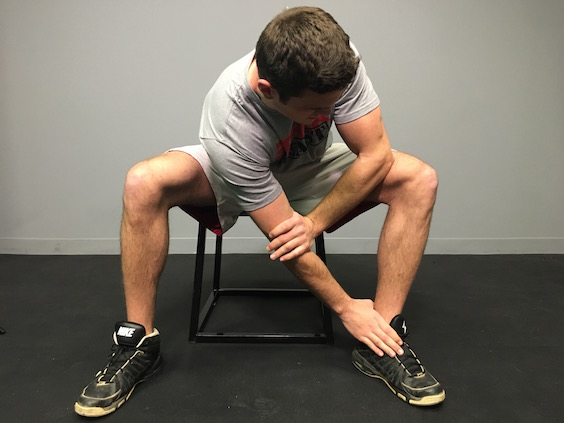Study Finds That Teenagers Get as Much Exercise as 60-Year-Olds
Before technology became so prevalent, kids spent a lot of time outdoors. They played stick ball in the streets, flew kites and rode their bikes everywhere. However, things are much different now. Thanks to smartphones, we have constant, mindless entertainment.
Technology is a lot of fun, but it has its downsides. Because of its influence, a recent study says that the average teenager gets about as much exercise as the average 60-year-old.
The study was conducted at Johns Hopkins Bloomberg School of Public Health in Baltimore. Researchers examined the workout habits and behaviors of more than 12,500 people through the data on their fitness trackers. Then they separated the data into age groups.
What they found was alarming. A teenager, who is supposed to be highly active, is no more active than the elderly.
“Activity levels at the end of adolescence were alarmingly low, and by age 19, they were comparable to 60-year-olds,” says the study’s senior author, Vadim Zipunnikov.
This is alarming considering the CDC recommends that kids between the ages of 5 and 17 get 60 minutes of moderate to vigorous exercise every single day. That’s three times what the CDC recommends for adults.
About 25 percent of boys and 50 percent of girls under the age of 11 failed to meet the CDC guidelines. Study authors speculate that a big reason for the lack of physical exertion is the children’s school schedules. Schools have been steadily decreasing recess time over the years, and there’s simply not enough time outdoors for children during the school day.
“For school-age children, the primary window for activity was the afternoon between 2 p.m. and 6 p.m.,” Zipunnikov said. “So, the big question is, how do we modify daily schedules, in schools, for example, to be more conducive to increasing physical activity?”
A lack of activity in children leads to inactive teenagers. Unfortunately, the prognosis was worse as the kids aged. About 75 percent of girls and 50 percent of boys between the ages of 12 and 19 years old were well under the CDC’s recommendation for staying fit.
The exact reason for this lack of exercise isn’t exactly clear, but technology is a likely suspect. A recent report from Common Sense Media revealed that the average teen spends 9 hours a day using media for leisure. The popularity of smart phones is a big factor here. About 94 percent of teens report using their phone for personal enjoyment on a daily basis, and social media is the most popular activity.
In moderation, the use of technology among teens is not a bad thing. It can be educational and useful, but study authors suspect that all this time spent online could be their physical undoing.
More Physical Activity for Teens
Study authors urge parents to help their teens get more active. Consequences of low activity include obesity, heart disease, weak bones and muscles, and other issues that can lead to health problems later on.
“The goal of campaigns aimed at increasing physical activity has focused on increasing higher-intensity exercise,” Zipunnikov said. “Our study suggests that these efforts should consider time of day and also focus on increasing lower-intensity physical activity and reducing inactivity.”
In other words, teenagers should spend more time moving through both structured workouts as well as regular activities. Here are some tips for helping teens get the physical activity they need:
Hire a Personal Trainer
The whole family could benefit from hiring a personal trainer. Teens and parents don’t fully understand how to work out for maximum benefit, and a trainer can help fill the knowledge gap. Sites like Yocale are great for finding local personal trainers as well as scheduling appointments for free.
Enroll in Structured Sports
Some teens have a natural interest in sports while others prefer other activities. Though you don’t want to overwhelm your kids with too many activities, a little time in organized sports can be beneficial. It will force them to move while teaching them the value of teamwork.
Encourage Walking or Biking
Your teen might need a car to get to school or football practice, but they don’t have to use it for everything. Discuss the importance of walking or biking, and encourage this form of normal activity on a daily basis.
Limit Phone, TV and Video Game Use
As mentioned previously, media is a huge draw for teenagers. The majority of time not spent at school is spent using technology, and that makes it difficult for them to get the physical activity they need. As a parent, you can limit their time spent on these devices and incentivize workouts. They may not appreciate your tactics now, but they’ll be grateful later on for the discipline you instilled in them.
Health and vitality starts when you’re young. Teens should be more physically active, and the decisions they make now will shape their future.
READ MORE:
- New Report Finds U.S. Kids Are Horribly Out of Shape
- Why Aren’t More Kids Playing Sports?
- Why Fun Should Be the Focus of Youth Sports
Paul Bradbury/iStockPhoto, monkeybusinessimages/iStockPhoto
RECOMMENDED FOR YOU
MOST POPULAR
Study Finds That Teenagers Get as Much Exercise as 60-Year-Olds
Before technology became so prevalent, kids spent a lot of time outdoors. They played stick ball in the streets, flew kites and rode their bikes everywhere. However, things are much different now. Thanks to smartphones, we have constant, mindless entertainment.
Technology is a lot of fun, but it has its downsides. Because of its influence, a recent study says that the average teenager gets about as much exercise as the average 60-year-old.
The study was conducted at Johns Hopkins Bloomberg School of Public Health in Baltimore. Researchers examined the workout habits and behaviors of more than 12,500 people through the data on their fitness trackers. Then they separated the data into age groups.
What they found was alarming. A teenager, who is supposed to be highly active, is no more active than the elderly.
“Activity levels at the end of adolescence were alarmingly low, and by age 19, they were comparable to 60-year-olds,” says the study’s senior author, Vadim Zipunnikov.
This is alarming considering the CDC recommends that kids between the ages of 5 and 17 get 60 minutes of moderate to vigorous exercise every single day. That’s three times what the CDC recommends for adults.
About 25 percent of boys and 50 percent of girls under the age of 11 failed to meet the CDC guidelines. Study authors speculate that a big reason for the lack of physical exertion is the children’s school schedules. Schools have been steadily decreasing recess time over the years, and there’s simply not enough time outdoors for children during the school day.
“For school-age children, the primary window for activity was the afternoon between 2 p.m. and 6 p.m.,” Zipunnikov said. “So, the big question is, how do we modify daily schedules, in schools, for example, to be more conducive to increasing physical activity?”
A lack of activity in children leads to inactive teenagers. Unfortunately, the prognosis was worse as the kids aged. About 75 percent of girls and 50 percent of boys between the ages of 12 and 19 years old were well under the CDC’s recommendation for staying fit.
The exact reason for this lack of exercise isn’t exactly clear, but technology is a likely suspect. A recent report from Common Sense Media revealed that the average teen spends 9 hours a day using media for leisure. The popularity of smart phones is a big factor here. About 94 percent of teens report using their phone for personal enjoyment on a daily basis, and social media is the most popular activity.
In moderation, the use of technology among teens is not a bad thing. It can be educational and useful, but study authors suspect that all this time spent online could be their physical undoing.
More Physical Activity for Teens
Study authors urge parents to help their teens get more active. Consequences of low activity include obesity, heart disease, weak bones and muscles, and other issues that can lead to health problems later on.
“The goal of campaigns aimed at increasing physical activity has focused on increasing higher-intensity exercise,” Zipunnikov said. “Our study suggests that these efforts should consider time of day and also focus on increasing lower-intensity physical activity and reducing inactivity.”
In other words, teenagers should spend more time moving through both structured workouts as well as regular activities. Here are some tips for helping teens get the physical activity they need:
Hire a Personal Trainer
The whole family could benefit from hiring a personal trainer. Teens and parents don’t fully understand how to work out for maximum benefit, and a trainer can help fill the knowledge gap. Sites like Yocale are great for finding local personal trainers as well as scheduling appointments for free.
Enroll in Structured Sports
Some teens have a natural interest in sports while others prefer other activities. Though you don’t want to overwhelm your kids with too many activities, a little time in organized sports can be beneficial. It will force them to move while teaching them the value of teamwork.
Encourage Walking or Biking
Your teen might need a car to get to school or football practice, but they don’t have to use it for everything. Discuss the importance of walking or biking, and encourage this form of normal activity on a daily basis.
Limit Phone, TV and Video Game Use
As mentioned previously, media is a huge draw for teenagers. The majority of time not spent at school is spent using technology, and that makes it difficult for them to get the physical activity they need. As a parent, you can limit their time spent on these devices and incentivize workouts. They may not appreciate your tactics now, but they’ll be grateful later on for the discipline you instilled in them.
Health and vitality starts when you’re young. Teens should be more physically active, and the decisions they make now will shape their future.
READ MORE:
- New Report Finds U.S. Kids Are Horribly Out of Shape
- Why Aren’t More Kids Playing Sports?
- Why Fun Should Be the Focus of Youth Sports
Paul Bradbury/iStockPhoto, monkeybusinessimages/iStockPhoto













